1948 Chrysler Town & Country Four Door Sedan
1948 Chrysler Town & Country Woodie for sale in Chicago, Illinois, United States
| Item location: | Chicago, Illinois, United States |
| Make: | Chrysler |
| Model: | Town & Country |
| SubModel: | Woodie |
| Type: | Woodie Sedan |
| Trim: | Woodie |
| Year: | 1948 |
| Mileage: | 74,500 |
| VIN: | DNA |
| Color: | Tan |
| Engine size: | Spitfire Flathead 6 Cylinder 710019627 |
| Number of cylinders: | 6 |
| Fuel: | Gasoline |
| Transmission: | Semi-Automatic |
| Drive type: | RWD |
| Interior color: | Brown |
| Drive side: | Left-hand drive |
| Options: | Spotlight, Windshield Visor, Roof Rack, Seat Belts, Leather Seats |
| Vehicle Title: | Clear |
| Want to buy? | Contact seller! |
Description for Chrysler Town & Country 1948
They say that a picture is worth a thousand works and I do have several nice photos of my 1948 Chrysler Town and Country sedan. But I am going to also give you're the thousand (or more) words, I hope you enjoy them!
HISTORY OF THE CAR OWNERS
The 1948 Chrysler Town and Country sedan was purchased new on June 15, 1948 by Henry W. Breyer, Jr. who was the grandson of William A. Breyer who founded the Breyer Ice Cream Company. Henry was then living on an 80 acre estate on Old York Road in Elkins Park, Pennsylvania (Cheltenham Township). His mansion, which was built by his father, Henry W. Breyer, Sr., in 1915, is now on the National Register of Historic Places. Breyer Jr. used the woodie sedan to transport his family, guests and company's executives as well as serving to commute him to his office and factory in Philadelphia. Judging by the condition of the original carpets, the rear floor and the driver's side front were quite worn but the passenger side front was still in good condition. That would indicate that Breyer had a chauffeur to do the driving and that he and his guests would ride in the back seat. In 1956, Breyer sold his mansion which eventually became the offices of Cheltenham Township. The Chrysler was put into storage where it sat forgotten and unused for some 24 years. The last license plate on the car (and is still on the car) was of a 1956 vintage and the PA inspection sticker was also of that year. One of the last oil changes done was with Invader Motor Oil and the mileage at that time was 69,792. That oil change was done in Plumsteadville, PA according to the sticker which is still on the door post. Since the current mileage of the car is 74,400, the car has had less than 5,000 miles added since that oil change in about 1956.
In July of 1980, the car was purchased by Donald E. Rook of Pleasant Valley, PA and was added to his collection of over 100 cars, mainly Chryslers and Packards. He was well known locally for all the old cars he owned, the better ones kept in sheds and barns but others just sitting out in his fields. At some point after that purchase, he moved from PA to Mena, Arkansas where he had a large parcel of land and a bed and breakfast business. He moved his more special cars to his new location and stored them in sheds on his new property. The Breyer's Town and Country sedan was one of the cars to make the trip. In May of 2010, Rook decided to sell off a portion of his collection and the T & C sedan was purchased by Dave and Shari Flick of Los Gatos, California. In August of the same year Rook accidentally drowned in his own pond due to a boating mishap.
Dave and Shari Flick got right to work on their new acquisition giving it a major mechanical overhaul with most of the work being done by a local car restorer, Juan Villarreal. On July 25, 2011 the Flicks proudly showed their car at a National Woodie Club meet in Santa Cruz, CA. They were then debating how they would do the cosmetic restoration of the car, would they leave it as is or pursue a major painting and upholstery restoration. Sadly, Dave died that following October and the car needed to be sold.
I have always been a Mopar guy and have recently been interested in owning a woodie car at least one time in my life. That meant that I would look for a Chrysler Town and Country car of the 1940s and since I had noticed that the AACA had determined that the T & C was now defined as a classic car, it would be my choice of a woodie to find. I spotted the Flick's car on an Ebay auction in the spring of 2014, was attracted to its originality and its history and thought it would be the kind of car that I could do some work on myself to bring it back to its 1956 appearance which is when it went into a long hibernation. After some negotiation, I purchased the car sight unseen and had it shipped from San Jose, CA to Chicago, Illinois, both things that I never had done before. When it arrived by car transport, I got to see it in person and it was pretty much as I had imagined it would be. Since most of the mechanical work was already done, my goal was to make it more cosmetically pleasing and to bring it up to at least a condition #3 but try to keep as much of its originality as possible during the process. My fun and personal challenge was to rescue this classic car from its years of neglect and to make it into a decent drivable car for someone to enjoy for many years to come. I am not a professional restorer and make no pretense that this car is now perfect in any way, but I have accomplished my personal goal of rescuing this original Henry W. Breyer 1948 Town and Country sedan and bringing it back to a good looking 20 footer!
WORK DONE ON THE CAR
During the Breyer ownership, I believe the car was normally maintained, which in the case of woodie vehicles, meant an annual (or semi-annual) coat of varnish in addition to the usual mechanical maintenance. It was kept in the Breyer estate's garage (which is also on the National Register) and was probably used daily for Breyer's commute. After the estate was sold, the car was put into storage, place unknown, for the next 24 years. I don't believe anything was done to it during the storage years and it still has the last license plate it had during its regular use. It also had a small shard of its last vehicle inspection sticker on its windshield, I do have that shard but have replaced it with a NOS one of the exact same kind. And as previously mentioned, it still has an oil change sticker (no date) indicating a mileage of 69,792. And in 1972, some enterprising mice set up housekeeping in the rear seat cushion of the car, I determined this by piecing together some shards of PA newspapers they used for their comfort.
During the 30 years of Rook ownership, I don't believe much was done to the car, I think it was basically just stored and was not driven. The storage was probably done in sheds which were not very weather tight as there was a lot of surface rust all over the car by the time of the May 2010 auction. If you are really interested in my story, look up "Rook Barn Find Auction" and you will see a picture of this car on a flat bed trailer, apparently ready to go to its new owner. You will see a lot of said surface rust but note that the top of the car has been repainted its original color, Catalina Tan.
During the 4 years of Flick ownership, the car underwent a thorough mechanical restoration including the rebuilding of the engine and transmission and a complete going over of the cooling, fuel and braking systems. Inner fender panels and front end undercarriage were powder coated in black. /Many new parts were added including a set of radial tires in the original wide whitewall design. I do have all of the paperwork on all these repairs that pretty much show exactly what was done. The car was very drivable by July 25, 2011 when the Flicks took it to a National Woodie Club meet which was called "Woodies on the Wharf" and held in Santa Cruz, CA. Again, if you are interested, look up "Member Spotlight - Town and Country Woodies with Dave and Shari Flickâ€. If you scroll down the article a bit you will see pictures of them with the car and a bit of their story of ownership. After Dave's untimely death just a few months later, the car was kept at the shop where the restoration took place until it was offered for sale on an Ebay auction.
As mentioned before, my goal of work needed for my T & C was to bring it up to a condition #3 vehicle, in old car lingo that would be a 20 footer. I am calling much of my efforts to be refurbishing rather than restoring. Rook had already repainted the top and someone had sanded off all the surface rust so my leaving what was left of the original paint did not seem very practical to me. My painting experience was very limited but I did want to try painting enamel on a car at least once in my life and this was my chance. I did remove and separately paint all components except for the front fenders and I just touched up the front door jambs so that they still have some of their original paint. My efforts were pretty good in most places, not as good in others. I still have about a half-gallon of paint so any of my work could be redone by a future owner. In my opinion, the upholstery was not savable, the leather was in shreds and the cloth torn with stuffing poking out. So I had the seats reupholstered with the correct Bedford cord fabric and the tan leather accents. I also installed a new rear carpet and front side kick panels as the originals were beyond saving. The total rest of the interior was left original, cleaned up or repaired as necessary. The door panels, which are all wood, were given a couple of coats of polyurethane varnish and original flip-flop handles were added. The exterior chrome pieces were rusty in places and pitted in others and some had lost their original shine. A few chrome trim pieces had been changed before I got the car and a few more NOS or good used pieces were included with the sale. So now the front bumper guards, 3 of the front fender moldings, the hood ornamen, taillight bezels, license light body and brake light bezel have been replaced with nicer used or NOS parts. The bumpers themselves have been cleaned up but could still use plating if desired. The trunk compartment was cleaned up, is still all original and I added a spare wheel and tire and a bumper jack all of which were missing when I bought the car. The bumper jack may not be the original one but I have tried it and it works with this car. I detailed the engine compartment a bit along with painting the firewall. I re-undercoated the fenders, the hood and the splash aprons. All of the exterior wood was sanded down (not bleached) and given 3 coats of spar varnish A contact material called Di-Noc was added to the panels, I will describe this a little later in my story. Although most of the mechanical work was done before I bought the car, it still needed some further repairs. I had the front end inspected and repaired and the wheels aligned. I had new shackles and bushings added to the rear leaf springs. I had the speedometer and the radio repaired. I had the radiator reworked and a low pressure cap installed to help with heating issues. I added a new 6 volt electric fan which is on a switch for extra cooling power if needed. And just recently I added a new coil. The only thing I have not done at this time is to repair the clock, usually this involves a good cleaning of the mechanism and it will again be functional. Otherwise, it is my belief that all mechanical components of this car are in good working condition.
HISTORY OF 1946-1948 TOWN AND COUNTRY CARS
Town and Country Chryslers in their true woodie form were built from 1941 to 1948. After that the wood tended to be applied to steel bodied cars rather than be an integral part of the body. The post-war 1946-1948 Town and Country cars are recognized by the AACA as being true classic cars. The main body styles of the post-war years were the convertible and the 4 door sedan. The convertible was built on a Chrysler New Yorker chassis and had an 8 cylinder engine. The sedan was built on a Chrysler Windsor chassis and had a 6 cylinder engine. The Chrysler promotion of the car said that the Town and Country had the "Grace and elegance of a yachtâ€. Currently, the T and Cs are known as land yachts. There were some minor differences over the 1946-1948 post-war run, notably that the roof racks on the sedan went from chrome in '46-'47 to wood in 1948. The insert Ply-metal panels were veneered in mahogany in '46-'47 but in late 1947, as a cost and efficiency measure, the panels were covered with Di-Noc which was sort of a contact type material. In the case of the Breyer sedan, the side panels including the doors still had the veneering while the trunk had the Di-Noc. The veneer on the front door upper panels was in very poor condition so my original decision was to add a current style of Di-Noc to all the panels, I even applied it over the existing veneer panels after repairing the upper front door panels. But after some time, the Di-Noc did not hold up where it was applied over the existing veneered panels. I then removed all the Di-Noc except for the trunk panels and refinished the original veneering on all the side panels. I re-veneered the upper front door panels and was able to match the color pretty well. I liked this solution much better as it better fit into my game plan of keeping the originality of the car. By the numbers, Chrysler produced 979 Town and Country cars in 1941 and 1,000 in 1942. In 1946, 1,936 convertibles and 224 sedans were produced. In 1947, 3,316 convertibles and 2,651 sedans were produced. In 1948, 3,303 convertibles and 1,176 sedans were produced. So overall, only 8,375 convertibles and 4,051 sedans were produced from 1946 through early 1949 when Chrysler redesigned all their models and called them the second series of that model year. It is unknown exactly how many of these classic T & Cs exist today, in many cases the wood rotted and the cars were junked years ago. But every once in a while, one turns up as a barn find and may be in fairly decent condition.
I hope you enjoyed my "1,000 wordsâ€, if you have any further questions on the Breyer car that I am selling, send me an Ebay email or give me a call at 773-746-6363.
Tom
Update Notes!! I have been enjoying my T & C over the past 3 years but I am wanting to move on to other adventures. I did not do a show car restoration on it but it has won a couple of People's Choice awards at various car shows and this past summer it was invited to be in a local Concours de Elegance event. I am glad to correspond with you if you are interested in this nice Town and Country Sedan and will certainly entertain decent offers for my car. I am sure that some restorers would want to bring this car up to show room condition and that might be an expensive project. But hopefully there are some restorers out there who think the car is fine the way it is, which is just about the way Henry Breyer sort of said goodbye to its use back in 1956. Let me hear from you even if you just enjoyed my story!

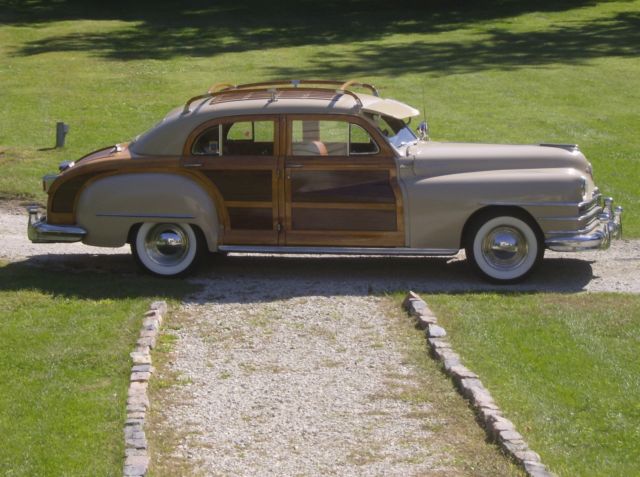
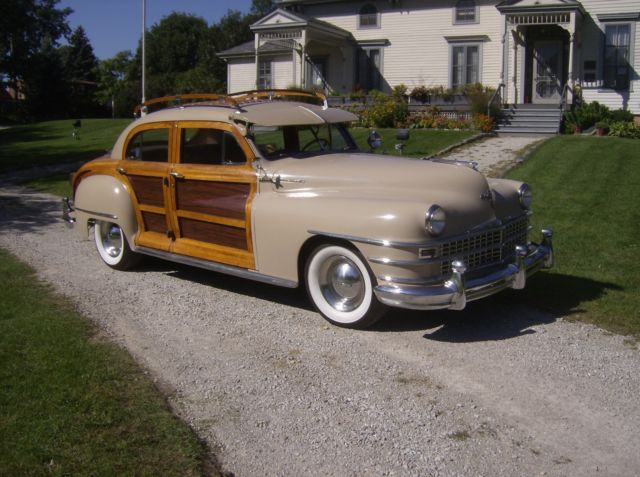
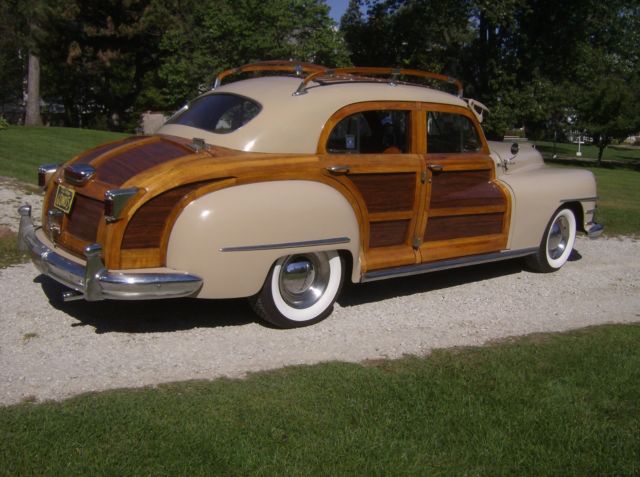
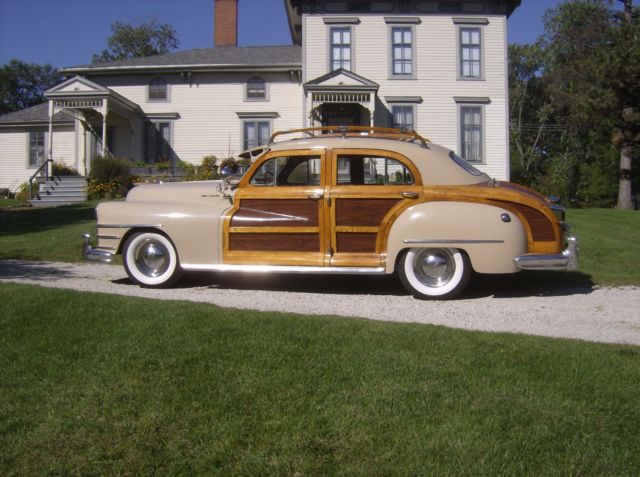
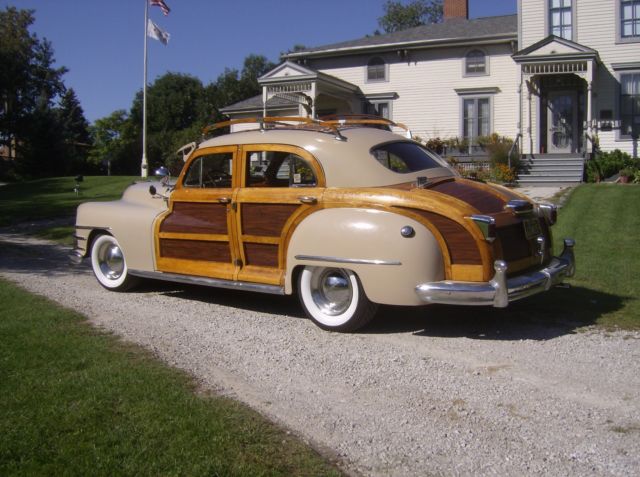
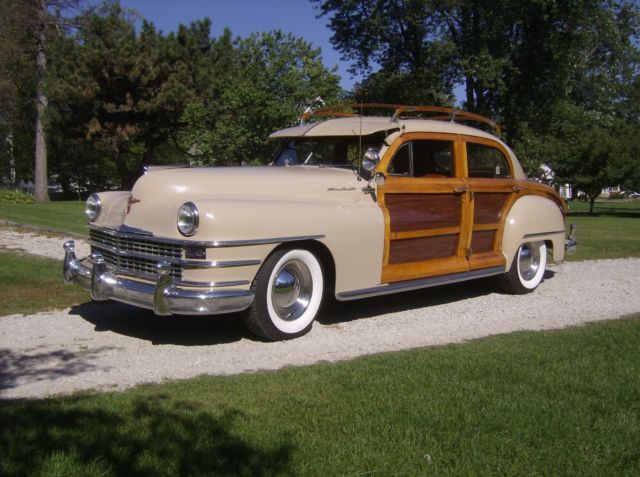
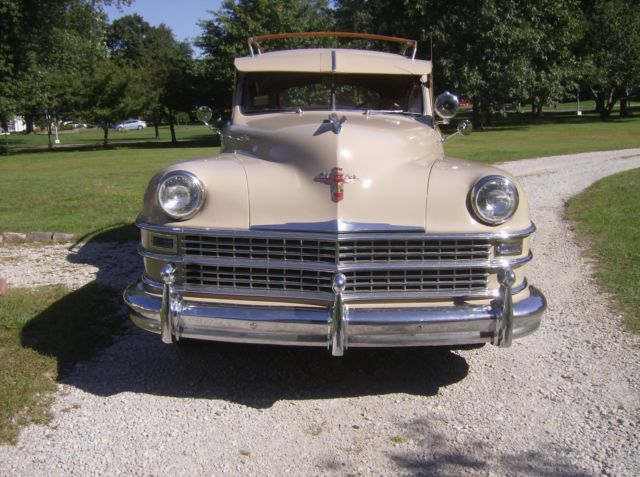
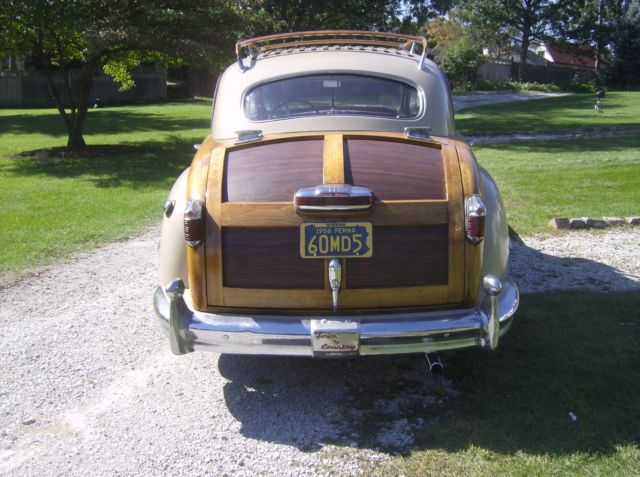
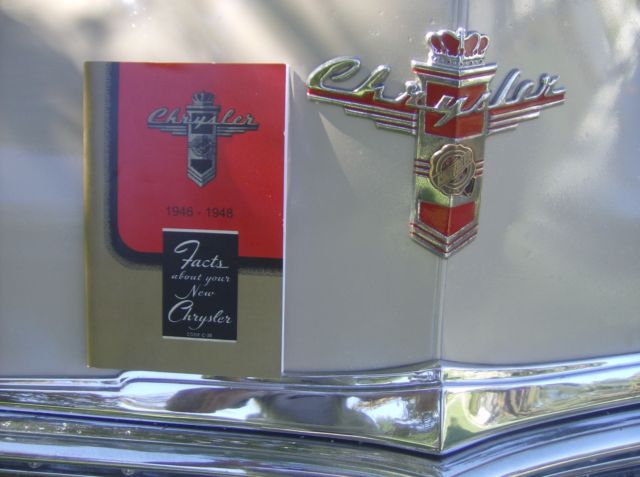
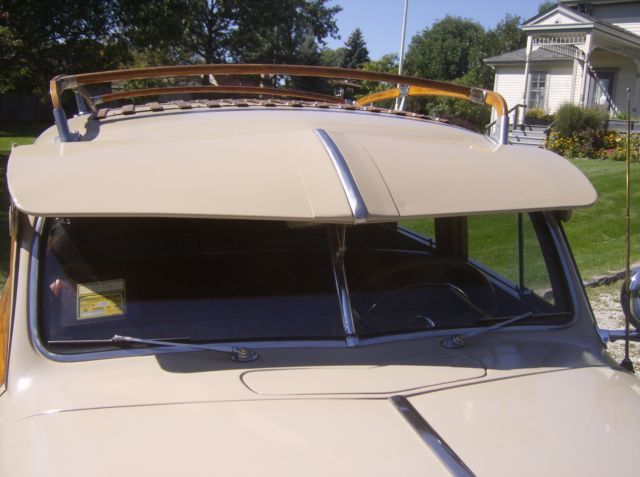
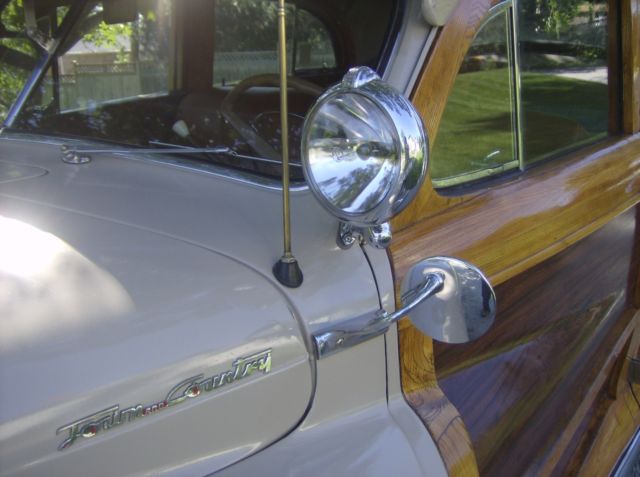
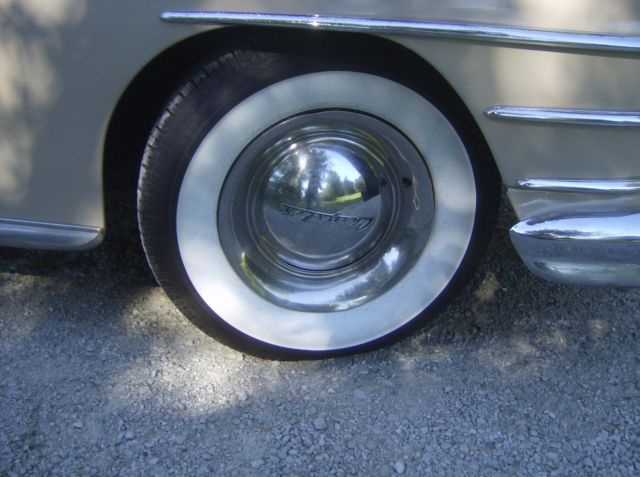
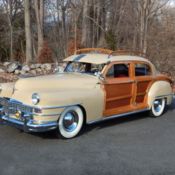 1947 Chrysler Town and Country 4 Door Sedan
1947 Chrysler Town and Country 4 Door Sedan
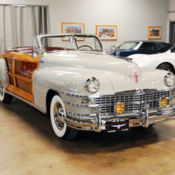 1948 Chrysler Town & Country
1948 Chrysler Town & Country
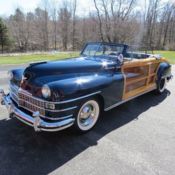 OLD 1948 Chrysler Town and Country Woody Convertible
OLD 1948 Chrysler Town and Country Woody Convertible
 1948 Chrysler New Yorker Town & Country, Very Nice
1948 Chrysler New Yorker Town & Country, Very Nice
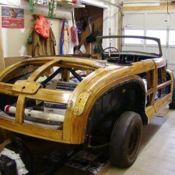 1948 Chrysler Town & Country Woodie Convertible
1948 Chrysler Town & Country Woodie Convertible
 1971 Chrysler Town & Country Station Wagon Chrysler Town & Country 440 V-8 Torqu
1971 Chrysler Town & Country Station Wagon Chrysler Town & Country 440 V-8 Torqu
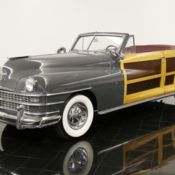 1948 Chrysler Town and Country Convertible *$1099 PER MONTH!*
1948 Chrysler Town and Country Convertible *$1099 PER MONTH!*
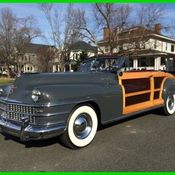 1948 Chrysler New Yorker Town & Country, Nice Restoration
1948 Chrysler New Yorker Town & Country, Nice Restoration